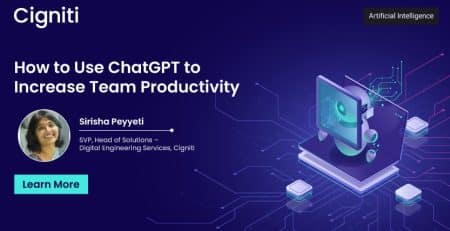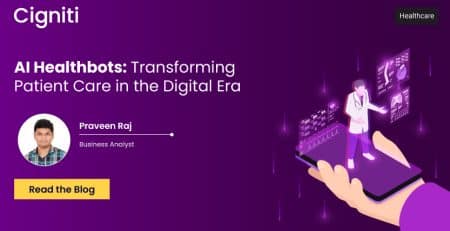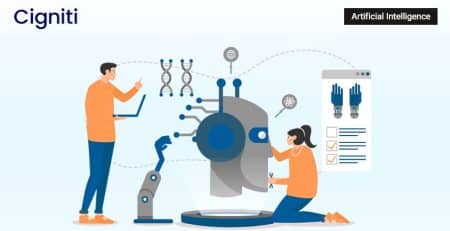The Impact of AI in Transforming Healthcare Organizations
Today, on a day in January 2030, it is very cold, and the flu disease is at its peak. Similar to a decade ago, clinics and doctor’s offices were overflowing with sick people waiting to be seen and get treated; today the patients move easily through the systems to get treated by the doctors.
So, what’s the difference now? With the immense pressure on global healthcare systems and a lack of skilled medical professionals to care for the rapidly growing and ageing populations, and the breakthroughs in powerful technology enablers such as data science and Artificial Intelligence, connected care has become a reality.
AI now has the ability to find patterns in massive volumes of data that are too subtle or complex for humans to notice. It accomplishes this by merging data from a range of sources, including linked home devices, medical records, and, increasingly, non-medical data, that remained isolated in 2020.
The ability to give really proactive, predictive healthcare will be the first big consequence in 2030.
AI Powered Predictive Care
AI and predictive analytics help us understand more about the various factors in our lives that influence our health, such as where we are born, what we eat, where we work, what our local air pollution levels are, and whether we have access to safe housing and a stable income, not just when we might get the flu or what medical conditions we’ve inherited. As described by the World Health Organization, these are some of the “social determinants of health” (SDOH).
This means that by 2030, healthcare systems will be able to predict when a person is at risk of developing a chronic condition and will be able to recommend preventative measures before the disease progresses. Diabetes, congestive heart failure, and COPD (chronic obstructive pulmonary disease), all of which are influenced by SDOH, are currently on the decline as a result of this progress.
Chronic diseases are expected to account for over three-quarters of all fatalities worldwide by 2020, with developing nations accounting for 71% of deaths due to ischemic heart disease (IHD), 75% of deaths due to stroke, and 70% of deaths due to diabetes. The number of people with diabetes in the developing world will double, from 84 million in 1995 to 228 million in 2025. On a global scale, emerging countries will bear 60% of the burden of chronic diseases.
In 2018, the United States’ healthcare spending climbed by 4.6 percent to $3.6 trillion, or $11,172 per person per year. The US healthcare system is estimated to waste $750 billion each year. There will be a global shortage of 12.9 million trained healthcare personnel by 2035. Evidence of superior patient outcomes at cheaper prices will become increasingly important in value-based reimbursement.
Networked hospitals, connected care
Along with predictive care, a new innovation in the delivery of such care has emerged. A hospital in 2030 is no longer a single large structure that treats a variety of diseases; instead, it focuses on the critically ill and highly complex procedures, while less urgent cases are monitored and treated through smaller hubs and spokes, such as retail clinics, same-day surgery centers, specialist treatment clinics, and even people’s homes.
All of these locations are linked by a uniform digital infrastructure. To maintain track of supply and demand across the network, centralized command centers analyses clinical and geographic data in real time. This network can eliminate bottlenecks in the system and ensure that patients and healthcare professionals are sent to where they can best be cared for or where they are most required, in addition to using AI to spot those in danger of deterioration.
The glue that keeps this network together is no longer location. The third key change in 2030 will be determined by the experiences of the people it serves.
Better patient and staff experiences
What is it about experiences that makes them so valuable? Patients, according to studies, have a direct influence on whether or not they recover. When physicians began to face high rates of burnout a decade ago, mostly due to the stress of striving to serve too many patients with too few resources, better work experiences became increasingly vital.
AI-powered predictive healthcare networks will help reduce wait times, optimize staff workflows, and alleviate the ever-increasing administrative burden in 2030. The more AI is used in clinical practice, the more clinicians believe that technology may enhance human abilities in areas such as surgery and diagnosis.
By learning from each patient, diagnosis, and procedure performed, AI creates experiences that adapt to the professional and the patient. This not only improves health outcomes, but it also reduces physician shortages and fatigue while ensuring the financial stability of the system.
Connected care, which connects people, locations, hardware, software, and services to establish actual care networks that promote long-term health and well-being, powers this networked system that spans communities.
Back to reality
We’re still a long way from realizing this objective in 2020. In the clinical sectors where they are employed to assist in diagnosing, treating, monitoring, and hopefully preventing and curing diseases, unintelligibly complicated technology, IT, and data systems continue to obstruct staff workflows and jeopardize the continuity of care.
However, it is a lengthy and difficult path that no single company or organization can undertake on its own. Governments, health systems, and private firms, in my opinion, must continue to collaborate to ensure that AI systems are fully interoperable and transparent, and that bias and inequality are avoided. As healthcare becomes more globalized, international regulations to regulate the way AI handles personal data will become increasingly important.
Challenges of AI in healthcare
A successful AI solution requires a vast amount of patient data to train and optimize the performance of the algorithms. In healthcare, gaining access to these databases creates a variety of issues:
Patient privacy and the ethics of data ownership
Personal medical records are only accessed with extreme caution. In recent years, data exchange between hospitals and AI businesses has aroused debate, posing a number of ethical concerns:
- How the patient data required to create a new AI solution is managed and owned?
- Can the hospitals continue to share (or sell) large amounts of de-identified patient data to third-party AI companies?
- Who is responsible to safeguard the patients’ privacy rights?
- What are the consequences (if any) if there is a security breach?
Quality and usability of data
Large volumes of data are often dependable and properly measured in other industries – for example, aeroplane engine sensors or car location and velocity data to estimate highway traffic. Data in healthcare is often subjective and imprecise, including concerns such as:
- Unstructured clinical data in electronic medical records makes them difficult to understand and process.
- Inaccurate data – a patient may be labelled as a non-smoker, but were they simply unwilling to acknowledge they couldn’t quit?
- Many service providers’ data is segregated, making it impossible to gather a complete profile and variety of factors for a patient’s health.
The future outlook for AI
Hybrid models, in which clinical professionals are assisted in diagnosis, treatment planning, and risk factor identification but retain ultimate responsibility for the patient’s care, represent the strongest potential for AI in healthcare over the next several years. By reducing perceived risk, healthcare providers will be more likely to employ the technology, and measurable benefits in patient outcomes and operational efficiency will begin to be delivered at scale.
Conclusion
Nonetheless, I believe that all three of these concepts have a good chance of becoming a reality. Intelligent systems are already capable of assisting humans and performing expert tasks. AI that can detect malignant lesions on an image, analyze and quantify physician notes, and manage patient flow in emergency rooms are just a few examples. The use of AI-enabled predictive analytics in hospitals is already helping to save lives in intensive care units. Outside of hospitals, it involves assisting in the identification of specific at-risk groups in order to lessen the need for hospital admissions through proactive primary or community care.
Most importantly, I believe we must remember that AI’s most potent application is to augment rather than replace human capabilities. People, not new technology, are at the heart of linked care: the people who need to be cared for and the people who work diligently to provide it to all of us.
Enterprises may face a number of challenges when using AI for business operations, including identifying the exact use cases, a lack of awareness about what really needs to be done, verifying the exact requirements based on the data input, and testing the business needs for functionality, performance, scalability, security, and more.
Despite the significant media attention, AI-powered solutions have only made tiny efforts toward tackling important concerns and have yet to make a meaningful overall impact on the global healthcare industry. If many critical hurdles can be overcome in the coming years, it has the potential to play a key role in how future healthcare systems run, supplementing clinical resources and assuring the best possible patient results.
Cigniti’s extensive experience in AI, machine learning, and analytics helps businesses improve their operations and quality assurance methods.
Need help? Talk to our healthcare testing experts and AI experts to learn more about the impact of AI in transforming healthcare organizations.





Leave a Reply